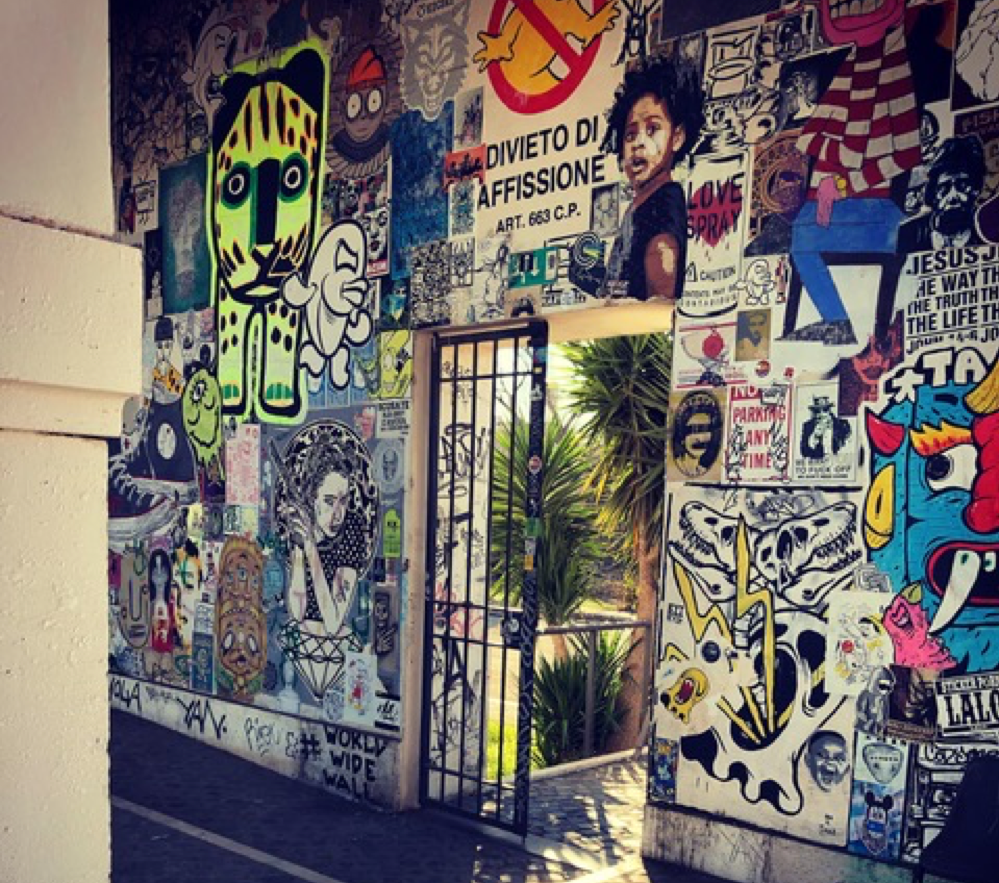By Emanuela Macrì, Valeria Morea and Michele Trimarchi

The recent urban experience reveals the growing importance of commons as a complex and often conflictual phenomenon where shared cultural practices are being developed within a responsible management of urban areas. In such intensive dynamics, the conventional binary between private and public interests leaves an undefined space for collective views and actions, whose definition and analysis calls for a multidisciplinary approach: economic, legal, sociological, architectural toolboxes need to establish a multifold dialogue, in order for interpretations of cultural commons and urban dynamics to generate consistent guidelines for urban policy and governance.
In the last thirty years, accumulation and technology, variously combined with their predictable outcome of new contradictions, inequalities and conflicts, have developed around the city as the hub where personal, social, cultural, and professional flows have been converging, overcrowding residential areas, relocating offices and institutions, intensifying the friction between centre and periphery, and at the same time among the various patches of the resident multicultural communities.
The decline of the manufacturing economy in the Global North, and its repercussions for the Global South, have opened the era of the knowledge-based economy and cities have necessarily followed such a change. In such a respect, cities have possibly reinforced their importance for society, and they have become the hub where hybridisations occur and new value chains are developed. In the last decades, cities have framed the emerging practices around common goods, in the still undefined area of collective interest (neither strictly public nor merely private). The traditional natural commons have become a cultural practice and, eventually, urban citizens are finding new ways to govern collective resources or to govern a just city. Why is it so important to understand the relationships among cities, the economy, and culture? And how is it even possible to have a comprehensive view of so many intertwining variables?
Many disciplines may offer interpretations adopting their toolbox and glossary, but such single-trail views prove insufficient in order for the complexity of urban commons to be focused upon. A multidisciplinary approach is then needed in order for the arising complex issues and their delicate implications to be interpreted and dealt with. A conference held last year in Southern Italy, and the book Cultural Commons and Urban Dynamics. A Multidisciplinary Perspective published in 2020 by Springer, shows that the discussion and cross-fertilisation on cultural commons and urban dynamics among academics, professionals and artists on shared concerns can be beneficial in pushing the boundaries of each discipline. A good book ends with more questions than answers. Thus, participants to the conference and authors of the book tried to approach the contributions in a way that can instigate further dialogue within and between disciplines: an intriguing agenda for future research emerges from the investigations, offering a wider scope for interpretation of each involved discipline, whose conventional knowledge seems to be less eloquent in interpreting the emerging phenomena.
The book encompasses four broad disciplinary areas: cultural economics, architecture and urban planning, sociology, and the humanities. The contributions investigate the theory of commons and their applications, interpret urban and sociological phenomena and their policies, discuss the impact of technology in entrepreneurial and artistic practices. While economics benefits from exploring complex phenomena such as cultural and urban commons overcoming the rigid textbook grids, sociology can develop new views between social practices and symbolic values, and urban studies can receive insights from the emerging paradigm aimed at re-designing time and space in the framework of cities where cosmopolitan orientations coexist with the rediscovery of proximity.
In such a way, the book combines different views and examines various experiences, starting from the growing literature on commons and focusing upon the specific features of cultural commons, whose value chain stems from the joint dynamics of material infrastructures and shared social practices, within the effective synergy between the analogic and the digital dimensions. Neither a textbook nor an anthology, Cultural Commons and Urban Dynamics examines the received pillars and the unconventional developments in economics; connects the value of cultural heritage with both residents and tourists; reflects upon urban spaces and cultural identities, as well as the eloquence of social ferments in crafting new practices aimed at equality and re-appropriation; discovers new urban and social landscapes through the visionary action of artists.
The likely direction of our close future represents a clear change in personal and professional lives, as well as in social, productive and commercial exchanges. In such a framework, commons are mainly cultural, since they refer to the search for shared identity, common motivation, active practices and possibly semantic permeability with respect to the whole urban community. The exploration of commons will exert a strong impact on our relationship with a more inclusive and friendly space, as well as with a less demanding and rigid time. The benefits of the multidisciplinary approach adopted invite the readers to widen the scope of their cultural route, also in the light of the growing need for a more versatile society in which the myth of competition will gradually give space to shared practices and common challenges.
You can see a virtual where scholars discuss the publication Cultural Commons and Urban Dynamics.
This article is based on:
Cultural Commons and Urban Dynamics: a Multidisciplinary Perspective, edited by Emanuela Macrì, Valeria Morea and Michele Trimarchi, Springer International Publishing AG, 2020
About the authors:
Emanuela Macrì is research fellow at the Department of Law, Economics and Sociology, Magna Græcia University of Catanzaro (Italy).
Valeria Morea is research fellow at the Department of Architecture and Arts, Iuav University of Venice (Italy).
Michele Trimarchi is professor of Public Economics at Magna Græcia University of Catanzaro (Italy).
About the image:
Quartiere Testaccio in Rome, Italy (2018).
Leave a Reply